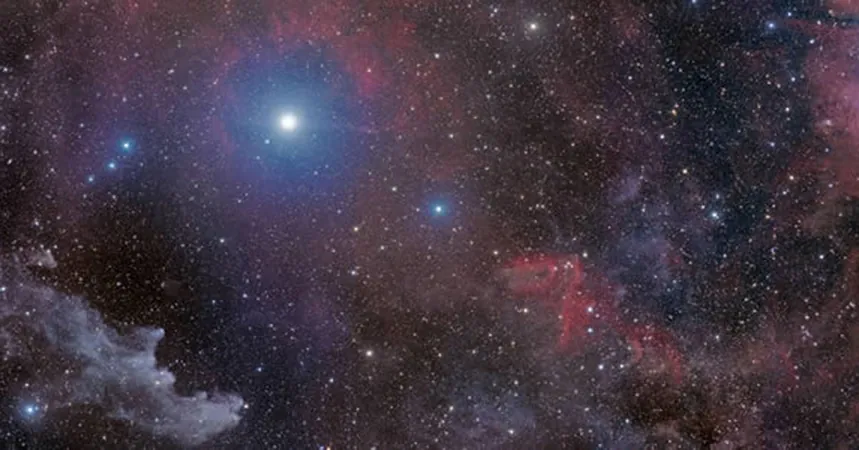
Shocking Findings from JWST: Do Most Galaxies Rotate Clockwise?
2025-03-24
Author: Nur
Groundbreaking JWST Study Reveals Clockwise Rotation of Galaxies
A groundbreaking study involving the James Webb Space Telescope (JWST) has revealed some astonishing results about our universe. With an estimated 200 billion galaxies spread across the cosmos, researchers surveyed 263 galaxies and discovered that approximately two-thirds of them rotate clockwise. This finding poses a significant challenge to the prevailing big bang cosmology theory.
Challenging the Isotropic Universe Assumption
Traditionally, astronomers have believed that galaxies should exhibit a roughly equal distribution of rotational direction, reflecting the assumption of an "isotropic" universe, meaning it appears uniform from every angle. However, the JWST study indicates that this is not the case, raising questions about our understanding of cosmic formation.
Historical Context of Rotational Asymmetries
While the findings may seem shocking, they are not entirely new. The study references prior research dating back to 1985 that documented similar asymmetries in galaxy rotation. What sets this new study apart, however, is the expanded scope of galaxies examined, their significant distances from us, and the substantial size of the observed asymmetry.
The Observation of Increased Asymmetry with Distance
One particularly fascinating aspect noted in the report is that the further astronomers look into space, the more pronounced this rotational asymmetry appears, should the study's conclusions hold true.
Revisiting the Big Bang Model
This leads to a critical examination of the big bang model, which some argue is so adaptable that it can be modified to account for just about any observation, suggesting a lack of explanatory power. As astronomers and cosmologists attempt to reconcile these findings, two potential theoretical adjustments arise: one proposes that our universe might have originated from a black hole in another universe, a concept that has gained some traction within the scientific community. The other option involves exploring uncertainties in the universe's expansion, but there's still much to unpack regarding how this might influence galaxy rotation.
Broader Implications and Reflections
The implications of these new findings extend beyond mere academic curiosity. They challenge the community to reconsider the mechanics of cosmic evolution and the fundamental principles of how galaxies form and behave. Some might point to the biblical perspective, asserting that the intricate complexities of galaxies and their functions reflect a higher power at work, echoing sentiments found in the scriptures which emphasize creation.
Looking Ahead to Future Discoveries
As we continue to explore the universe with advanced technologies like the JWST, these discoveries remind us of the vast mysteries still to be unraveled. The results may not only reshape our scientific paradigms but could also offer profound insights into the nature of existence itself.


 Brasil (PT)
Brasil (PT)
 Canada (EN)
Canada (EN)
 Chile (ES)
Chile (ES)
 Česko (CS)
Česko (CS)
 대한민국 (KO)
대한민국 (KO)
 España (ES)
España (ES)
 France (FR)
France (FR)
 Hong Kong (EN)
Hong Kong (EN)
 Italia (IT)
Italia (IT)
 日本 (JA)
日本 (JA)
 Magyarország (HU)
Magyarország (HU)
 Norge (NO)
Norge (NO)
 Polska (PL)
Polska (PL)
 Schweiz (DE)
Schweiz (DE)
 Singapore (EN)
Singapore (EN)
 Sverige (SV)
Sverige (SV)
 Suomi (FI)
Suomi (FI)
 Türkiye (TR)
Türkiye (TR)
 الإمارات العربية المتحدة (AR)
الإمارات العربية المتحدة (AR)